Abstract
Recently, the determination of S-phenylmercapturic acid (S-PMA) in urine has been proposed as a suitable biomarker for the monitoring of low level exposures to benzene. In the study reported here, the test has been validated in 12 separate studies in chemical manufacturing plants, oil refineries, and natural gas production plants. Parameters studied were the urinary excretion characteristics of S-PMA, the specificity and the sensitivity of the assay, and the relations between exposures to airborne benzene and urinary S-PMA concentrations and between urinary phenol and S-PMA concentrations. The range of exposures to benzene was highest in workers in chemical manufacturing plants and in workers cleaning tanks or installations containing benzene as a component of natural gas condensate. Urinary S-PMA concentrations were measured up to 543 micrograms/g creatinine. Workers' exposures to benzene were lowest in oil refineries and S-PMA concentrations were comparable with those in smoking or nonsmoking control persons (most below the detection limit of 1 to 5 micrograms/g creatinine). In most workers S-PMA was excreted in a single phase and the highest S-PMA concentrations were at the end of an eight hour shift. The average half life of elimination was 9.0 (SD 4.5) hours (31 workers). Tentatively, in five workers a second phase of elimination was found with an average half life of 45 (SD 4) hours. A strong correlation was found between eight hour exposure to airborne benzene of 1 mg/m3 (0.3 ppm) and higher and urinary S-PMA concentrations in end of shift samples. It was calculated that an eight hour benzene exposure of 3.25 mg/m3 (1 ppm) corresponds to an average S-PMA concentration of 46 micrograms/g creatinine (95% confidence interval 41-50 micrograms/g creatinine). A strong correlation was also found between urinary phenol and S-PMA concentrations. At a urinary phenol concentration of 50 mg/g creatinine, corresponding to an eight hour benzene exposure of 32.5 mg/m3 (10 ppm), the average urinary S-PMA concentration was 383 micrograms/g creatinine. In conclusion, with the current sensitivity of the test, eight hour time weighted average benzene exposures of 1 mg/m3 (0.3 ppm) and higher can be measured.
Full text
PDF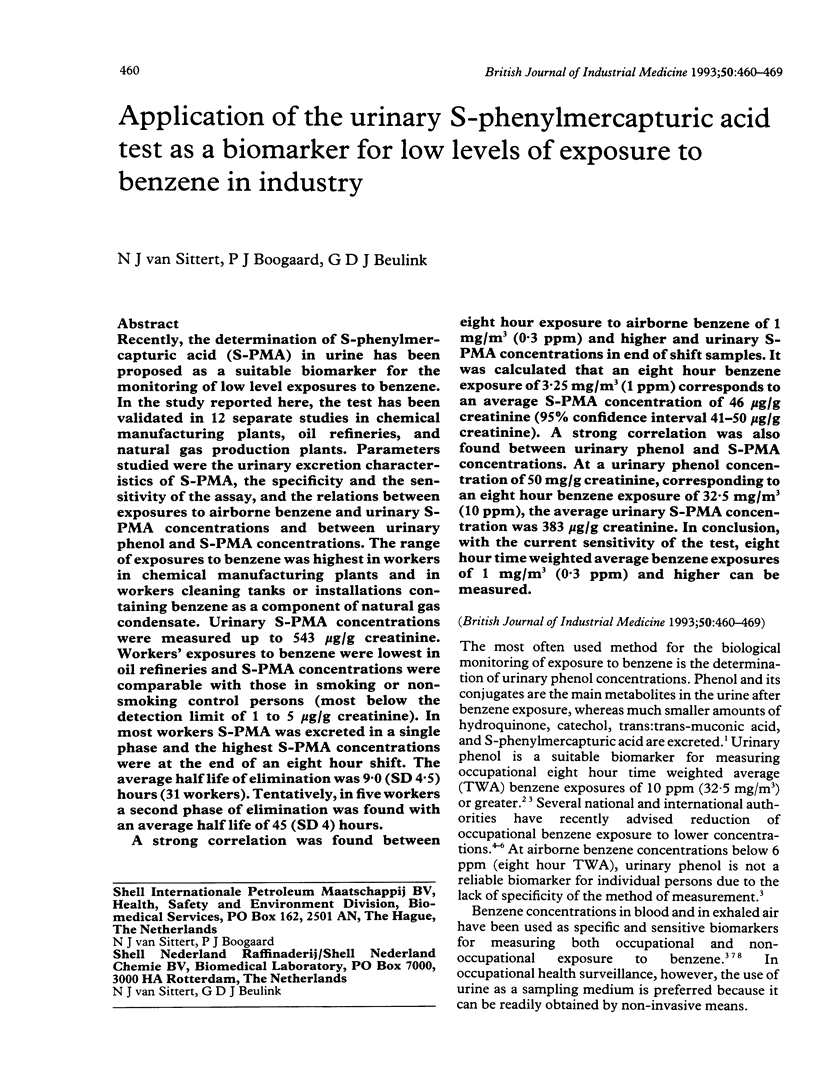
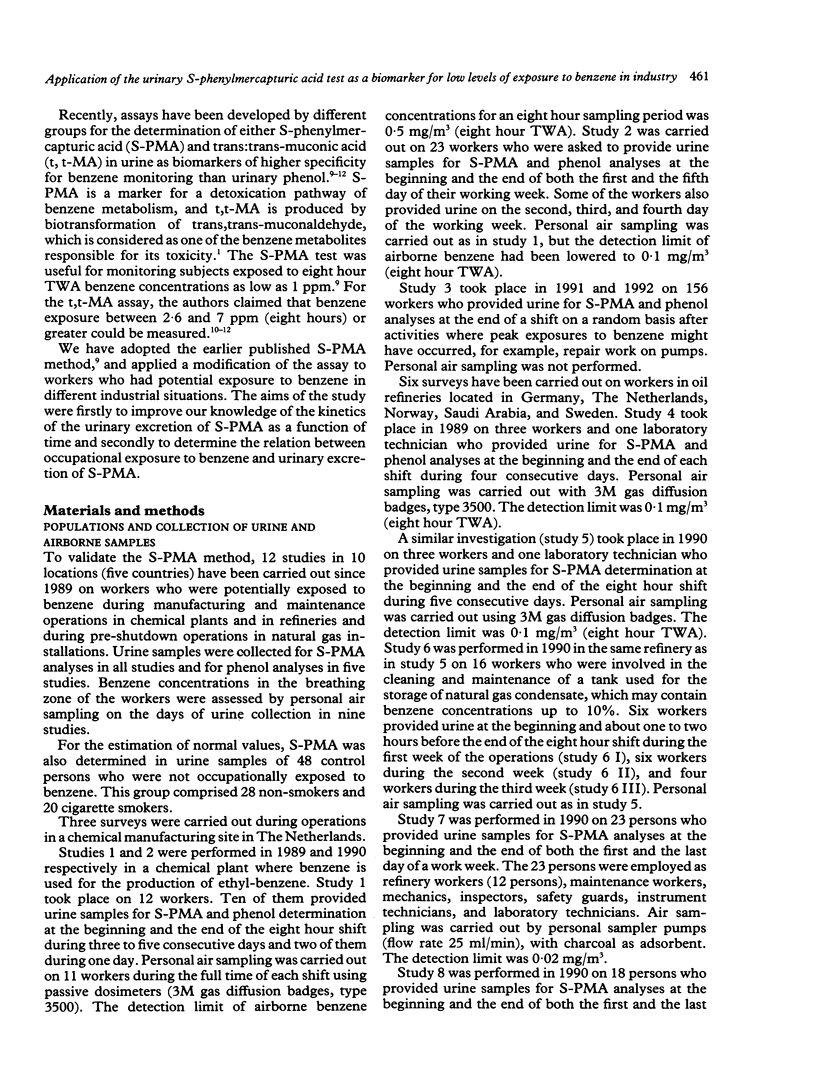

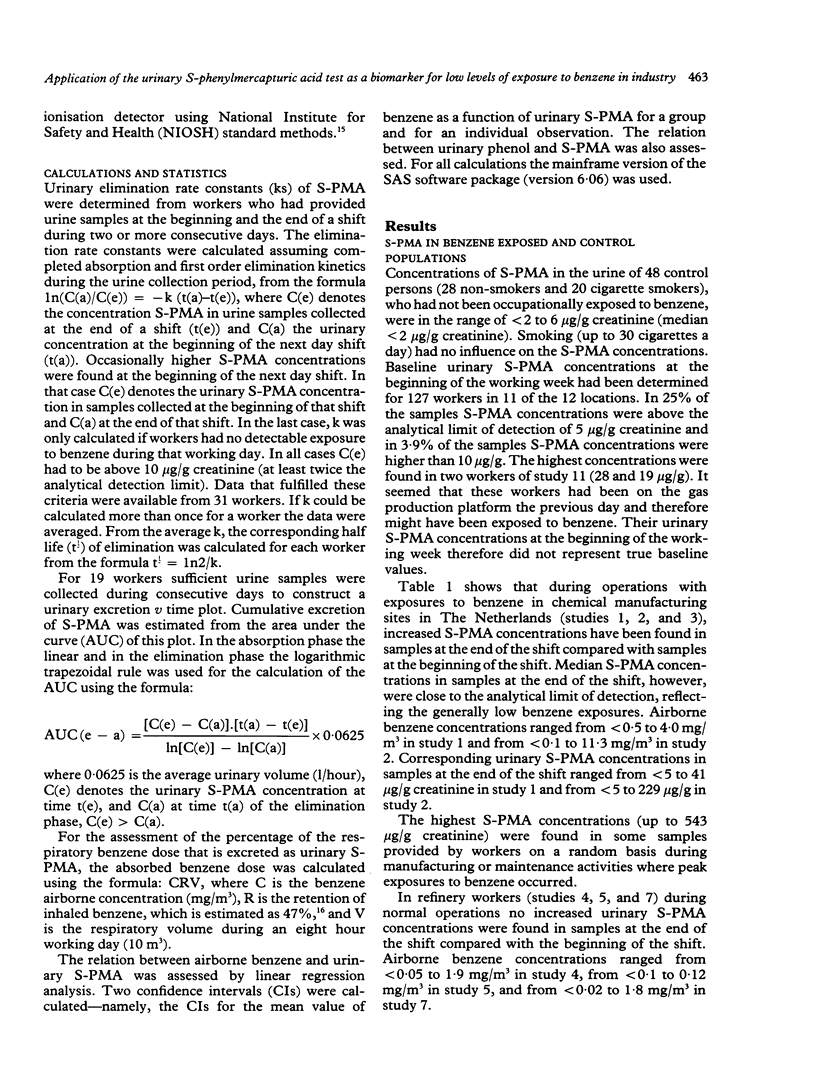
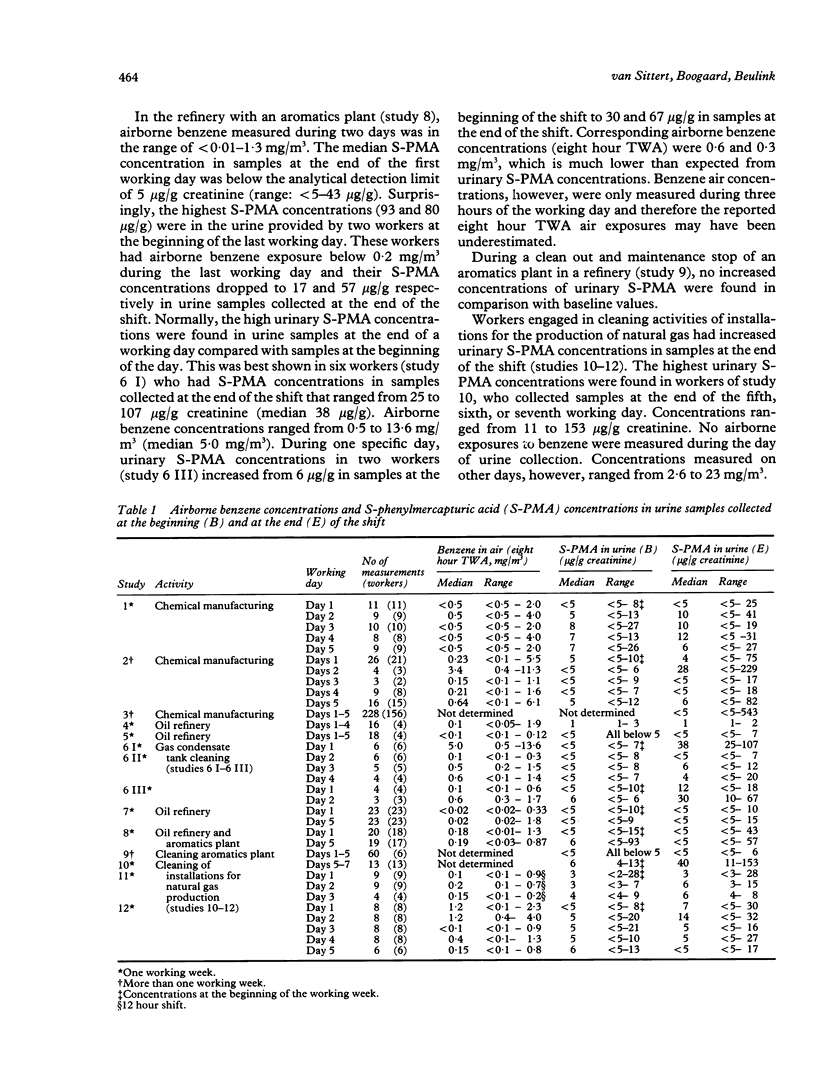
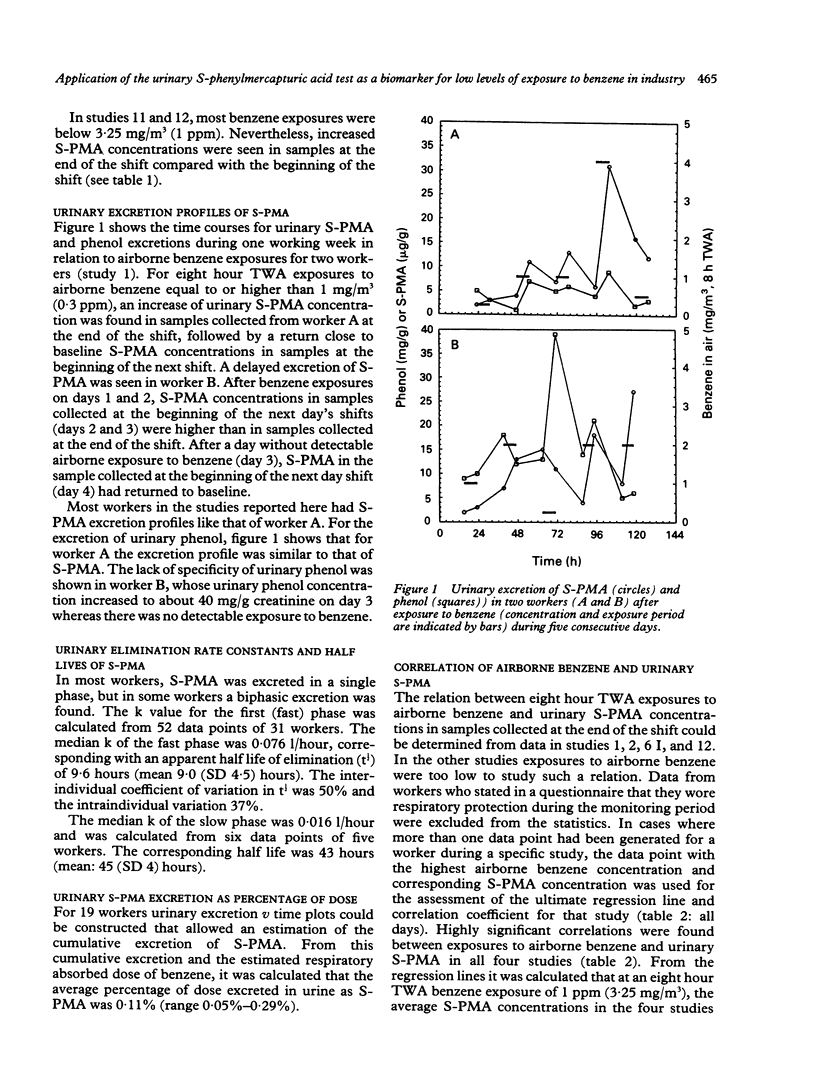
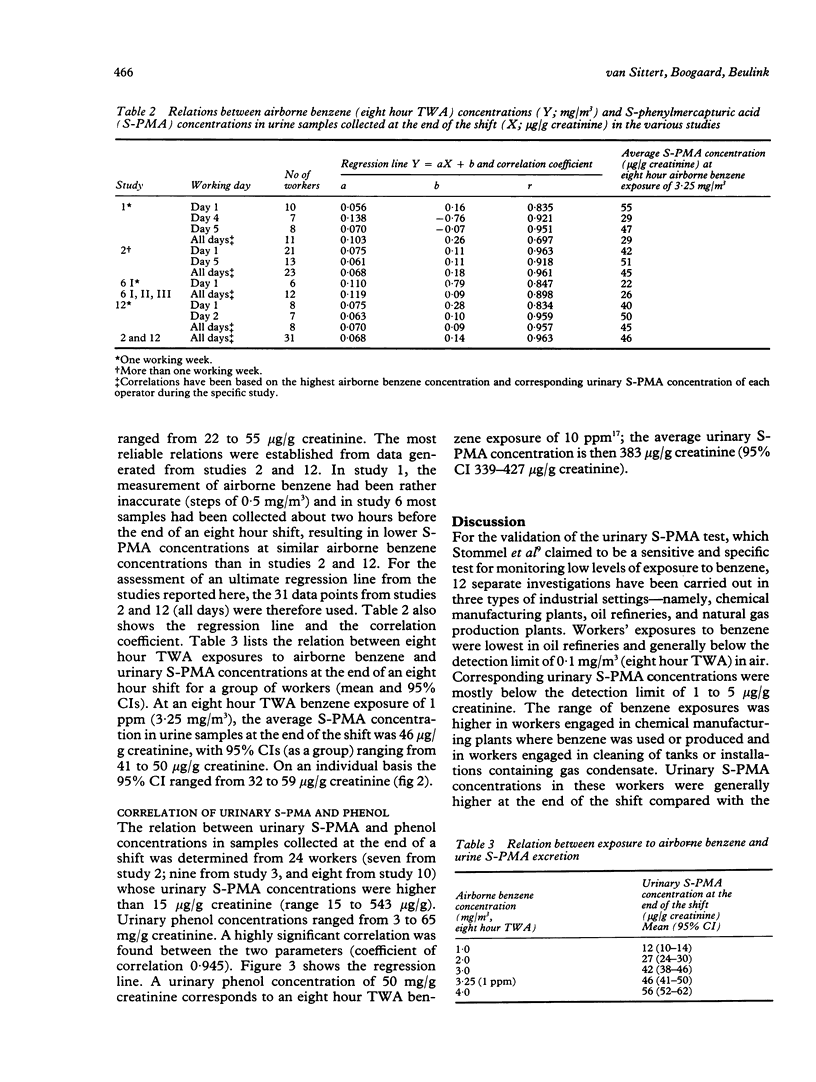

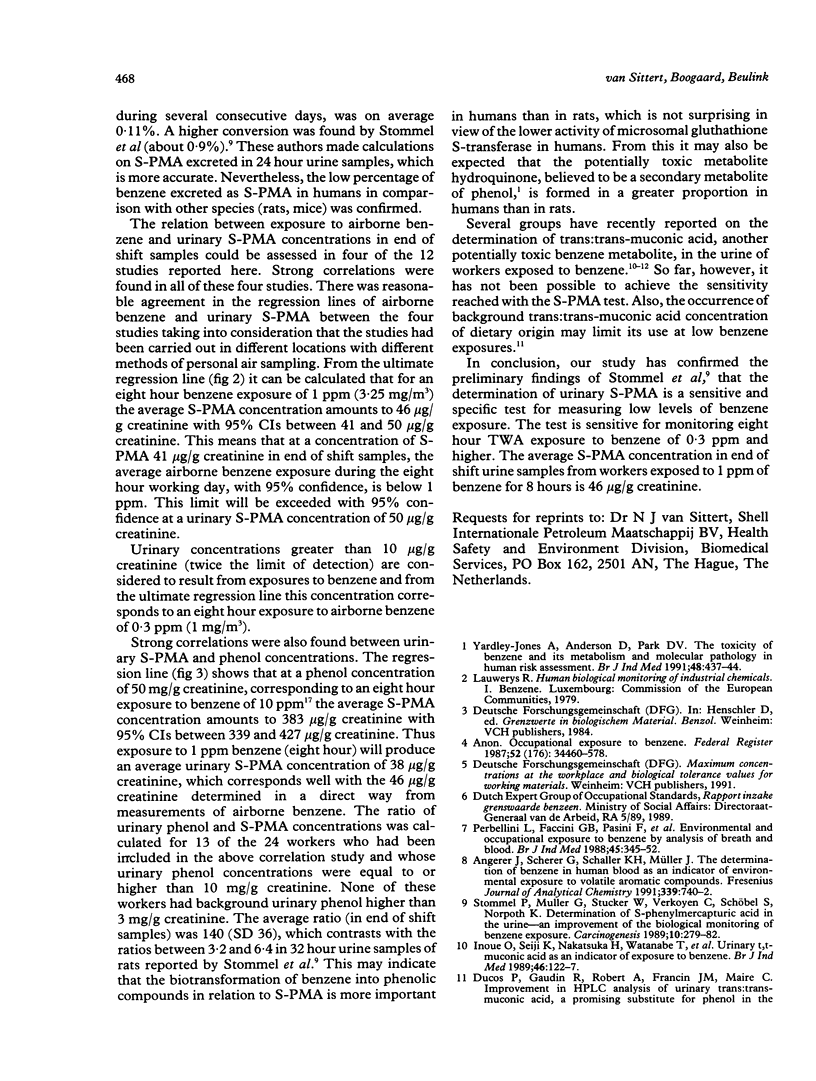
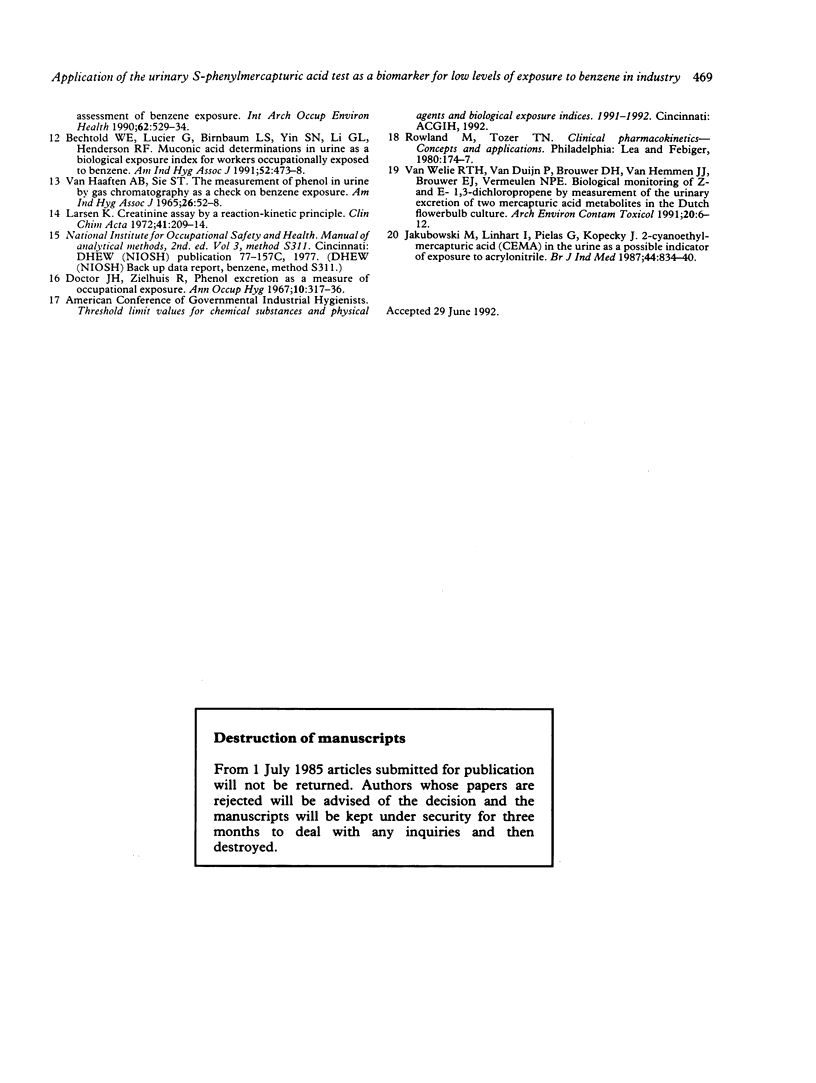
Selected References
These references are in PubMed. This may not be the complete list of references from this article.
- Bechtold W. E., Lucier G., Birnbaum L. S., Yin S. N., Li G. L., Henderson R. F. Muconic acid determinations in urine as a biological exposure index for workers occupationally exposed to benzene. Am Ind Hyg Assoc J. 1991 Nov;52(11):473–478. doi: 10.1080/15298669191365072. [DOI] [PubMed] [Google Scholar]
- Docter H. J., Zielhuis R. L. Phenol excretion as a measure of benzene exposure. Ann Occup Hyg. 1967 Oct;10(4):317–326. doi: 10.1093/annhyg/10.4.317. [DOI] [PubMed] [Google Scholar]
- Ducos P., Gaudin R., Robert A., Francin J. M., Maire C. Improvement in HPLC analysis of urinary trans,trans-muconic acid, a promising substitute for phenol in the assessment of benzene exposure. Int Arch Occup Environ Health. 1990;62(7):529–534. doi: 10.1007/BF00381185. [DOI] [PubMed] [Google Scholar]
- Inoue O., Seiji K., Nakatsuka H., Watanabe T., Yin S. N., Li G. L., Cai S. X., Jin C., Ikeda M. Urinary t,t-muconic acid as an indicator of exposure to benzene. Br J Ind Med. 1989 Feb;46(2):122–127. doi: 10.1136/oem.46.2.122. [DOI] [PMC free article] [PubMed] [Google Scholar]
- Jakubowski M., Linhart I., Pielas G., Kopecký J. 2-Cyanoethylmercapturic acid (CEMA) in the urine as a possible indicator of exposure to acrylonitrile. Br J Ind Med. 1987 Dec;44(12):834–840. doi: 10.1136/oem.44.12.834. [DOI] [PMC free article] [PubMed] [Google Scholar]
- Larsen K. Creatinine assay by a reaction-kinetic principle. Clin Chim Acta. 1972 Oct;41:209–217. doi: 10.1016/0009-8981(72)90513-x. [DOI] [PubMed] [Google Scholar]
- Perbellini L., Faccini G. B., Pasini F., Cazzoli F., Pistoia S., Rosellini R., Valsecchi M., Brugnone F. Environmental and occupational exposure to benzene by analysis of breath and blood. Br J Ind Med. 1988 May;45(5):345–352. doi: 10.1136/oem.45.5.345. [DOI] [PMC free article] [PubMed] [Google Scholar]
- Stommel P., Müller G., Stücker W., Verkoyen C., Schöbel S., Norpoth K. Determination of S-phenylmercapturic acid in the urine--an improvement in the biological monitoring of benzene exposure. Carcinogenesis. 1989 Feb;10(2):279–282. doi: 10.1093/carcin/10.2.279. [DOI] [PubMed] [Google Scholar]
- VAN HAAFTENA, SIE S. T. THE MEASUREMENT OF PHENOL IN URINE BY GAS CHROMATOGRAPHY AS A CHECK ON BENZENE EXPOSURE. Am Ind Hyg Assoc J. 1965 Jan-Feb;26:52–58. doi: 10.1080/00028896509342700. [DOI] [PubMed] [Google Scholar]
- Yardley-Jones A., Anderson D., Parke D. V. The toxicity of benzene and its metabolism and molecular pathology in human risk assessment. Br J Ind Med. 1991 Jul;48(7):437–444. doi: 10.1136/oem.48.7.437. [DOI] [PMC free article] [PubMed] [Google Scholar]
- van Welie R. T., van Duyn P., Brouwer D. H., van Hemmen J. J., Brouwer E. J., Vermeulen N. P. Inhalation exposure to 1,3-dichloropropene in the Dutch flower-bulb culture. Part II. Biological monitoring by measurement of urinary excretion of two mercapturic acid metabolites. Arch Environ Contam Toxicol. 1991 Jan;20(1):6–12. doi: 10.1007/BF01065321. [DOI] [PubMed] [Google Scholar]


